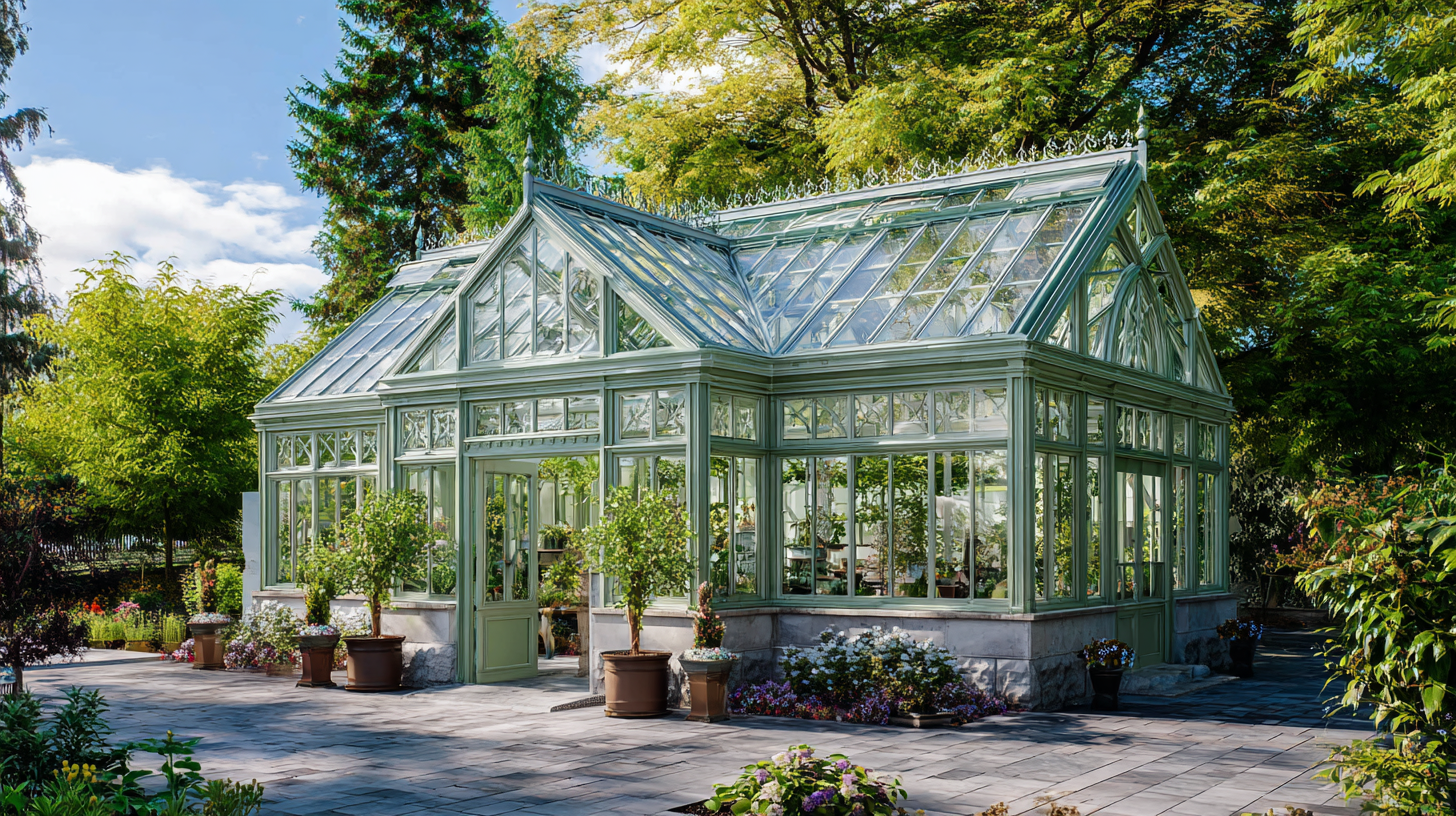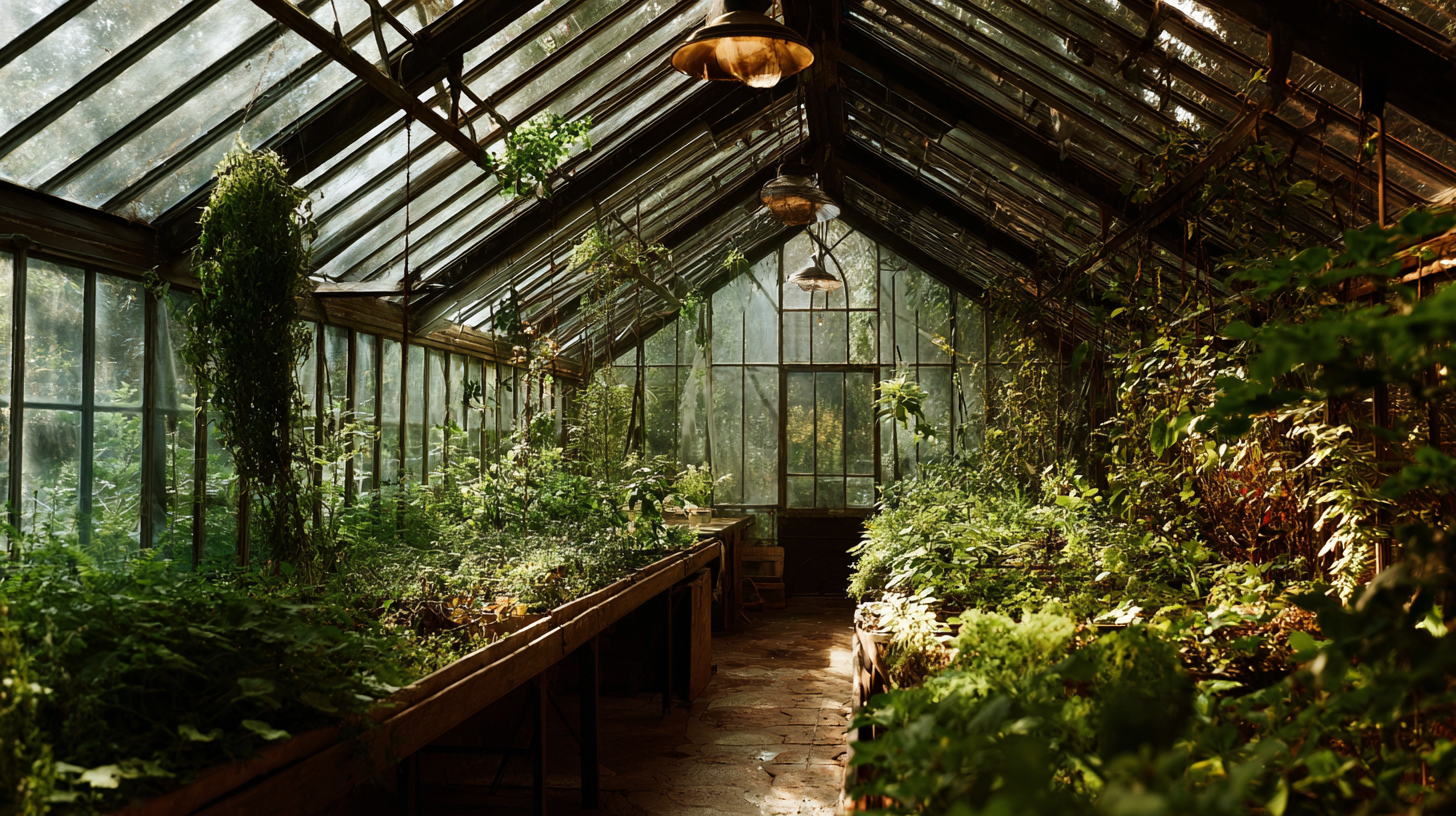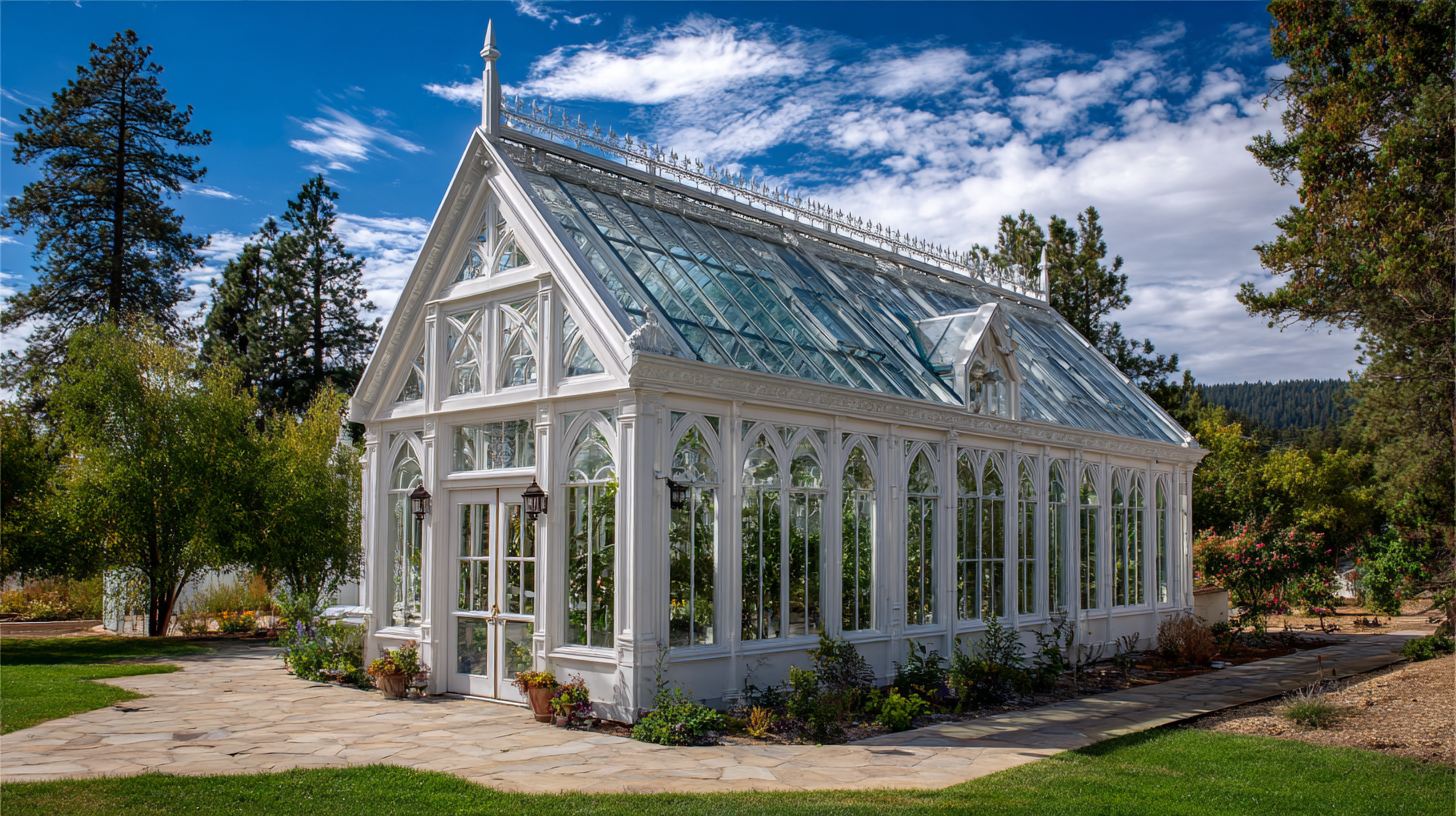
Unveiling the Advantages of the Best Gothic Greenhouse for Your Gardening Journey
The Gothic Greenhouse has emerged as a transformative addition to modern gardening, blending aesthetic appeal with exceptional functionality. According to a report by the National Gardening Association, over 35 million households in the U.S. engage in gardening, a trend that reflects a growing desire for homegrown produce alongside ornamental plants. The innovative design of Gothic Greenhouses, characterized by their tall arches and spacious interiors, not only maximizes light exposure but also enhances ventilation, which is crucial for plant health. Furthermore, studies indicate that using greenhouses can increase crop yields by up to 60%, a statistic that underscores their significant role in sustainable gardening practices. As gardeners seek efficient ways to extend their growing seasons and improve crop quality, the Gothic Greenhouse stands out as an ideal solution that aligns with both aesthetic preferences and practical gardening advancements.

Benefits of Choosing a Gothic Greenhouse for Year-Round Gardening Success
When it comes to year-round gardening, choosing the right greenhouse can significantly impact your plant's health and productivity. Gothic greenhouses, with their distinctive peaked roofs and robust structures, offer several advantages to gardeners looking to extend their growing season. According to a recent report by the National Gardening Association, nearly 60% of gardeners believe that a greenhouse improves their yields by at least 30%, and gothic designs optimize space while allowing for excellent airflow and light distribution.
One of the primary benefits of a gothic greenhouse is its ability to withstand harsh weather conditions. The sloped roof design efficiently sheds snow and rain, reducing the likelihood of structural damage. This is especially crucial in regions that experience heavy snowfall, where traditional greenhouse designs may struggle. A study conducted by Greenhouse Management Magazine found that structures with a gothic design can remain stable in winds up to 70 mph, showcasing their durability.
**Tip**: Regularly monitor the humidity levels inside your gothic greenhouse. High humidity can lead to mold and pest issues, so consider installing a ventilation system or using oscillating fans to maintain optimal conditions.
**Tip**: Maximize sunlight exposure by placing your greenhouse in a location that receives at least 6 hours of direct sunlight each day. This will help your plants thrive and promote faster growth rates. By leveraging the unique advantages of a gothic greenhouse, you can embark on a successful and prolonged gardening journey.

Exploring Unique Design Features of the Best Gothic Greenhouses
Gothic greenhouses are gaining popularity among gardening enthusiasts due to their striking aesthetic and practical benefits. One of the unique design features of the best gothic greenhouses is their peaked roof structure, which not only adds a touch of elegance but also maximizes sunlight exposure. This design helps maintain optimal temperatures, creating a perfect environment for plants to thrive. The combination of arched windows and doors enhances air circulation, minimizing heat and humidity build-up, which can be detrimental to plant health.
When choosing a gothic greenhouse, consider the materials used. High-quality glass and durable frames contribute to longevity and insulation, ensuring your plants remain protected from harsh weather conditions. Incorporating raised beds or benches within the greenhouse can also aid in space management and accessibility.
Tips for maintaining your gothic greenhouse include regularly checking for leaks, ensuring proper ventilation, and utilizing automatic watering systems to ease the burden of daily maintenance. Additionally, consider incorporating drip irrigation to ensure that your plants receive adequate hydration without excessive water waste. These features not only streamline the gardening process but also enhance your overall gardening experience in your gothic sanctuary.
Gardening Benefits of Gothic Greenhouses
How Gothic Greenhouses Enhance Plant Growth and Health
Gothic greenhouses are increasingly becoming the preferred choice for gardening enthusiasts looking to enhance plant growth and health. The unique architectural style of these greenhouses features a pointed arch design, which not only adds aesthetic appeal but also maximizes internal space. This structure allows for better air circulation and light penetration, creating an optimal environment for plants to thrive. With taller ceilings and sloped sides, Gothic greenhouses minimize the risk of stagnant air, ensuring that plants receive the fresh airflow necessary for healthy growth.
Moreover, the design of Gothic greenhouses is particularly effective in regulating temperature and humidity levels. Their rounded tops help trap heat during colder months, while the height enables cooler air to circulate during warmer seasons. This feature is vital for sensitive plants that require specific temperature ranges to flourish. Additionally, the increased height allows for vertical gardening, enabling the growth of a wider variety of plants, from tall vegetables to cascading flowers. Ultimately, the Gothic greenhouse not only supports a diverse array of plant life but also fosters an environment that promotes optimal health, leading to thriving gardens year-round.

Cost-Effectiveness of Investing in a Gothic Greenhouse
Investing in a Gothic greenhouse is not just a stylistic choice; it is also a cost-effective strategy for modern gardening. With the increasing emphasis on sustainable practices, these greenhouses are designed to maximize energy efficiency while minimizing greenhouse gas emissions. By incorporating efficient energy-saving technologies, gardeners can significantly reduce operational costs over time, ensuring a favorable return on investment.
When considering a Gothic greenhouse, it’s crucial to evaluate the flexibility it offers. These structures can accommodate various types of plants, allowing for extended growing seasons and diverse gardening experiences. Furthermore, labor efficiency is enhanced as the design often allows for better air circulation and natural light penetration, significantly lowering the need for artificial heating and lighting.
**Tips for maximizing your Gothic greenhouse investment include:**
1. **Optimize layout**: Plan your planting and workspace to ensure easy access and maximize sunlight exposure.
2. **Utilize technology**: Consider investing in automated ventilation and shading systems to enhance energy savings.
3. **Regular maintenance**: Keep your greenhouse in top condition to avoid costly repairs and ensure longevity, further protecting your investment.
By focusing on these strategies, gardeners can enjoy a productive horticultural journey while benefiting from the economic advantages that a Gothic greenhouse provides.
Unveiling the Advantages of the Best Gothic Greenhouse for Your Gardening Journey - Cost-Effectiveness of Investing in a Gothic Greenhouse
| Feature | Advantage | Cost-Effectiveness |
|---|---|---|
| Durability | Resistant to harsh weather conditions | Reduced replacement costs |
| Light Distribution | Optimizes sunlight absorption | Increased crop yield |
| Ventilation | Enhances air circulation | Lowers disease risk, reducing treatment costs |
| Space Efficiency | Maximizes growing area | More plants per square foot |
| Aesthetic Appeal | Enhances garden beauty | Increases property value |
Sustainable Gardening Practices Supported by Gothic Greenhouses
Gothic greenhouses represent a blend of aesthetic appeal and functionality, making them an ideal choice for sustainable gardening practices. Their unique architectural design facilitates efficient sunlight distribution, allowing plants to thrive while minimizing artificial lighting needs. This natural luminosity not only encourages healthier growth but also reduces energy consumption, aligning perfectly with eco-friendly gardening principles.
Additionally, the traditional shape of a Gothic greenhouse enhances ventilation, ensuring optimal air circulation throughout the structure. Good airflow is essential in maintaining humidity levels and preventing plant diseases, contributing to a more resilient garden ecosystem. By investing in a Gothic greenhouse, gardeners can practice soil conservation methods and composting with ease, as the controlled environment fosters a more stable setting for nurturing organic materials.
Moreover, these greenhouses can be equipped with rainwater collection systems, promoting water conservation. Harnessing natural rainfall reduces dependency on municipal water sources, allowing gardeners to cultivate their plants sustainably. As the world increasingly turns towards environmental consciousness, adopting such innovative gardening solutions within a Gothic framework can lead to a flourishing garden while promoting a greener planet.
